.
19.08.2015
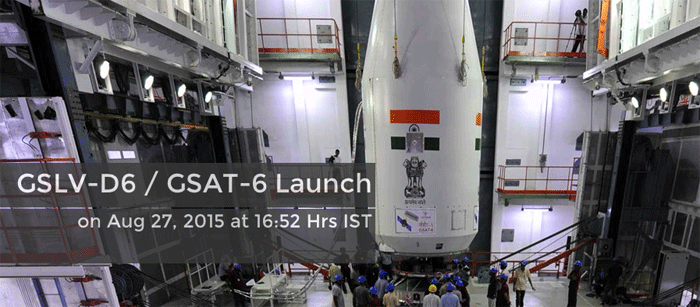
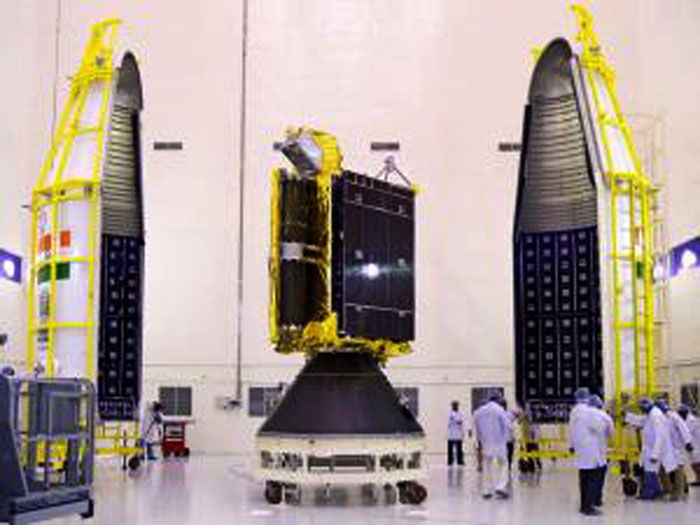
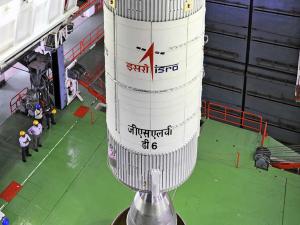
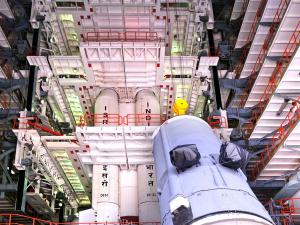
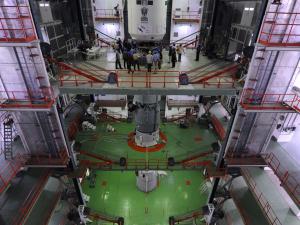

Quelle: ISRO
.
Update: 25.08.2015
.
Countdown for Indian rocket GSLV launch to begin on August 26
The 29-hour countdown for the launch of GSat-6 communication satellite using GSLV rocket will start on August 26 at 11.52 a.m, the Indian space agency said.
According to the Indian Space Research Organisation (ISRO), the Mission Readiness Review Committee and the Launch Authorisation Board (LAB) have cleared the August 27 evening launch.
The communication satellite will be launched with ISRO's heavier rocket geosynchronous satellite launch vehicle (GSLV).
According to ISRO, the GSLV rocket carrying the GSat-6 communication satellite weighing over 2,117 kg will blast off at 4.52 p.m. on August 27.
Quelle: BS
-
Update: 26.08.2015
.
Countdown Begins for Isro's GSAT-6 Launch on Thursday
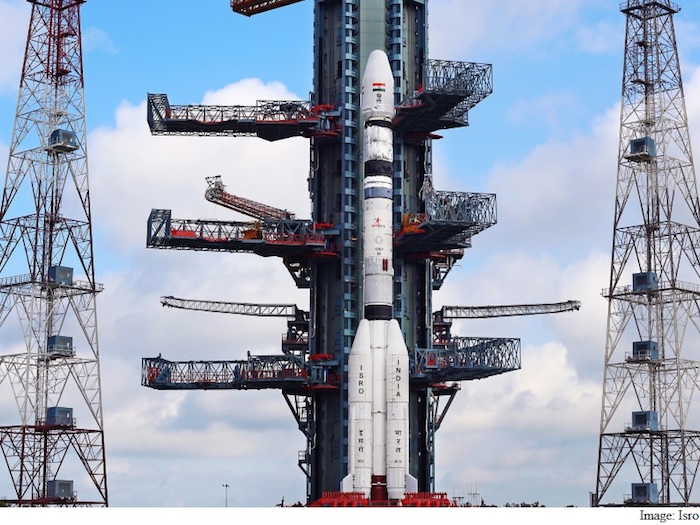
Indian space agency is flying the GSLV rocket with its own cryogenic engine for the second time on Thursday after the successful launch of similar rocket in January 2014 that put into orbit GSAT-14.
A cryogenic engine is more efficient as it provides more thrust for every kilogram of propellant burnt.
The satellite GSAT-6 is India's 25th geostationary communication satellite and twelfth in the GSAT series.
Five of GSAT-6's predecessors were launched by GSLV during 2001, 2003, 2004, 2007 and 2014 respectively.
After its commissioning, GSAT-6 will join the group of India's other operational geostationary satellites.
The satellite provides communication through five spot beams in S-band and a national beam in C-band for strategic users.
The cuboid shaped GSAT-6 has a lift-off mass of 2,117kgs. Of this, propellants weigh 1,132kgs and the dry mass of the satellite is 985kgs.
One of the advanced features of GSAT-6 satellite is its S-Band Unfurlable Antenna of six metre diameter.
This is the largest satellite antenna realised by Isro. This antenna is utilised for five spot beams over the Indian main land.
The spot beams exploit the frequency reuse scheme to increase frequency spectrum utilisation efficiency.
The satellite's life expectancy is nine years.
Quelle: NDTV
-
Update: 27.08.2015 / 8.50 MESZ
.
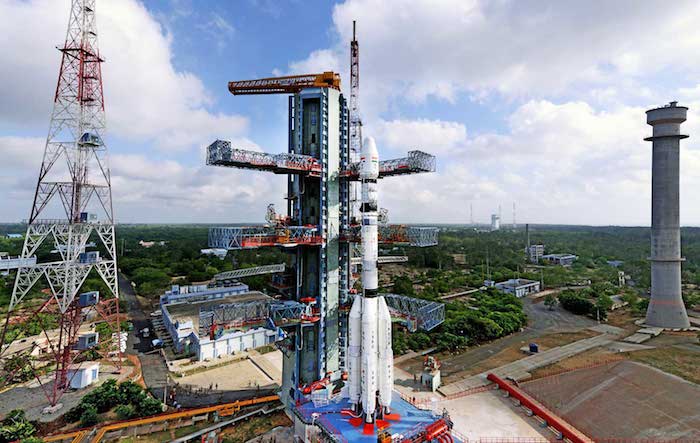
GSLV-D6 is the ninth flight of India's Geosynchronous Satellite Launch Vehicle (GSLV). It is also the fifth developmental flight of GSLV. This is the third time the indigenously developed Cryogenic Upper Stage (CUS) is being carried on-board during a GSLV flight. GSLV-D6 flight is significant since it intends to continue the testing of CUS. GSLV is designed to inject 2 ton class of communication satellites into Geosynchronous Transfer Orbit (GTO).
GSLV-D6 will be launched from the Second Launch Pad at Satish Dhawan Space Centre SHAR (SDSC SHAR), Sriharikota.
GSLV-D6 will launch 2117 kg GSAT-6, an advanced communication satellite, into a GTO. GSAT-6 will provide S-band communication services in the country. After reaching GTO, GSAT-6 will use its own propulsion system to reach its final geostationary orbital home and will be stationed 0 at 83 East longitude.
GSLV-D6 vehicle is configured with all its three stages including the CUS similar to the ones successfully flown during the previous GSLV-D5 mission in January 2014. GSLV-D5 successfully placed GSAT-14 satellite carried on-board in the intended GTO very accurately.
The metallic payload fairing of GSLV-D6 has a diameter of 3.4 m. The overall length of GSLV-D6 is 49.1 m with a lift-off mass of 416 t.
The Cryogenic Upper Stage (CUS) being flown in GSLV-D6 is designated as CUS-06. A Cryogenic rocket stage is more efficient and provides more thrust for every kilogram of propellant it burns compared to solid and earth-storable liquid propellant rocket stages.
The cryogenic stage is technically a very complex system compared to solid or earth-storable liquid propellant stages due to its use of propellants at extremely low temperatures and the associated thermal and structural challenges. Oxygen liquifies at -183 deg C and Hydrogen at -253 deg C. The propellants, at these low temperatures, are to be pumped using turbo pumps running at around 40,000 rpm.
The main engine and two smaller steering engines of CUS together develop a nominal thrust of 73.55 kN in vacuum. During the flight, CUS fires for a nominal duration of 720 seconds.
S-band telemetry and C-band transponders enable GSLV-D6 performance monitoring, tracking, range safety/flight safety and Preliminary Orbit Determination (POD).
.

Quelle: ISRO
...
Update: 14.30 MESZ
.
ISRO Successfully Launched GSLV - D6 From Sriharikota

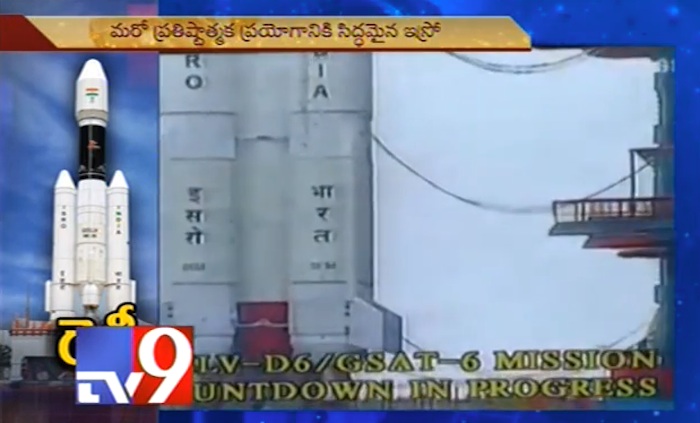
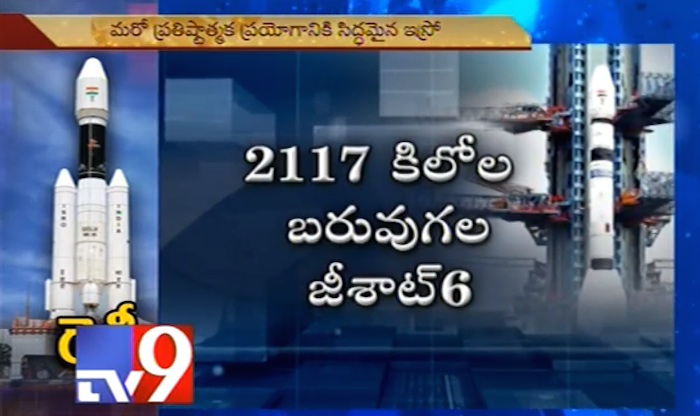
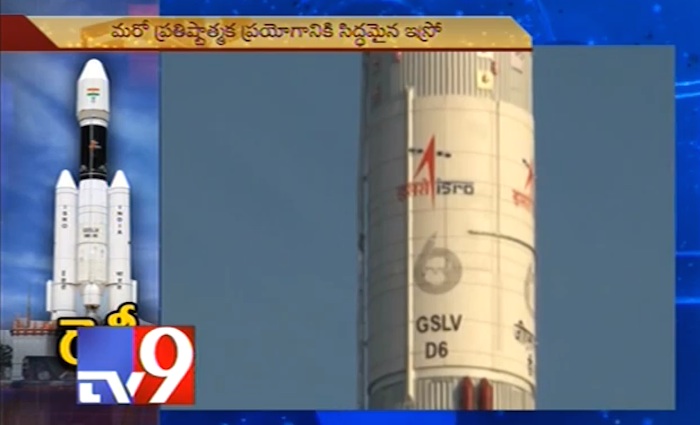

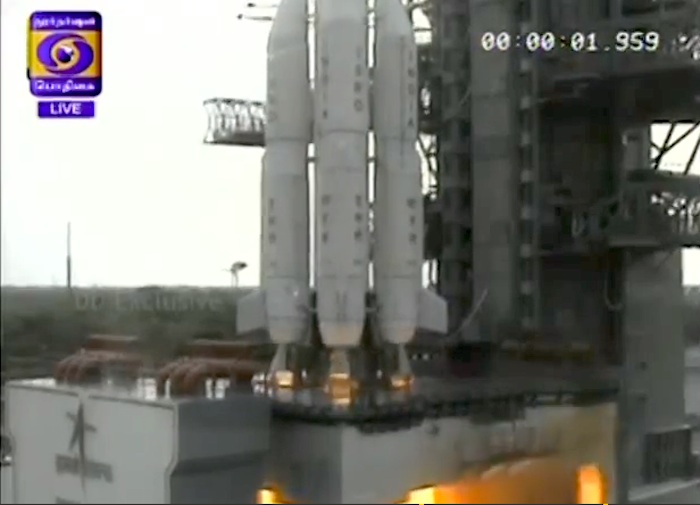

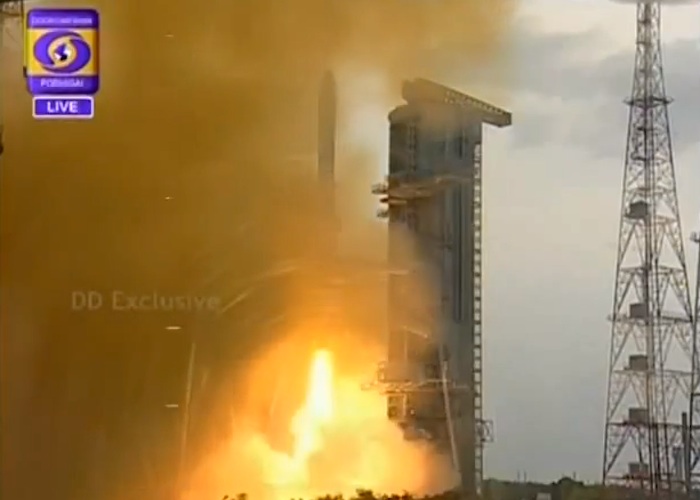
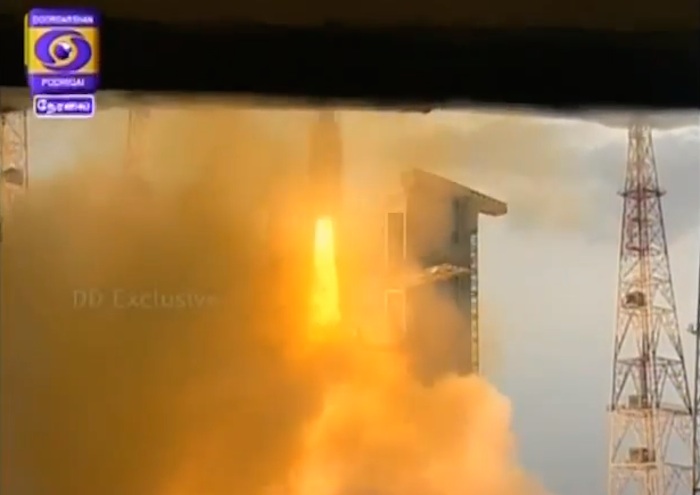
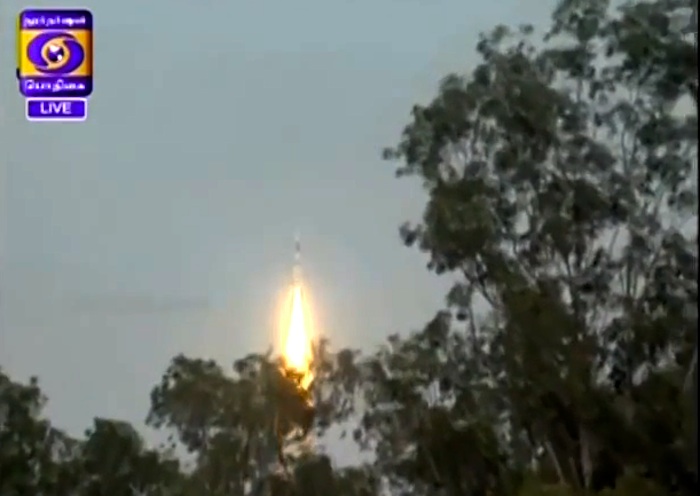
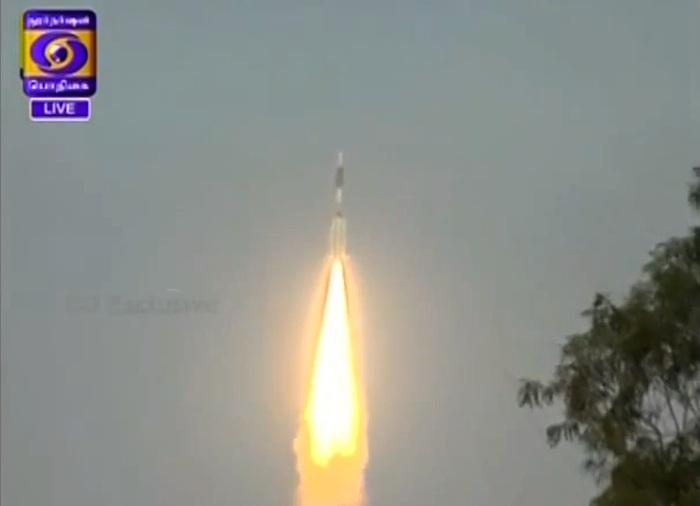
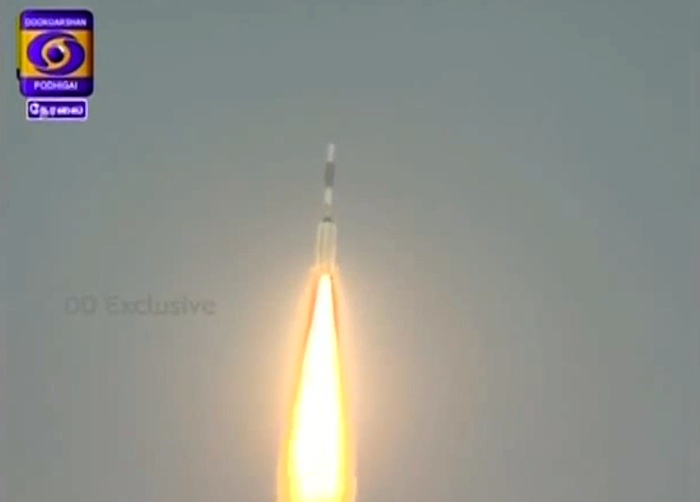
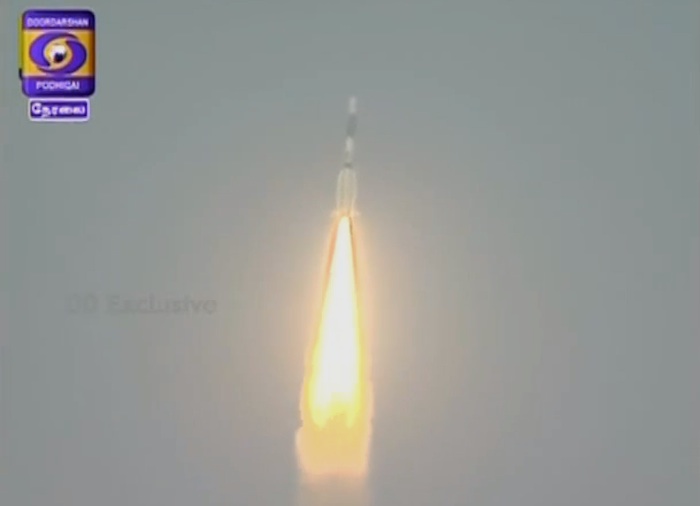

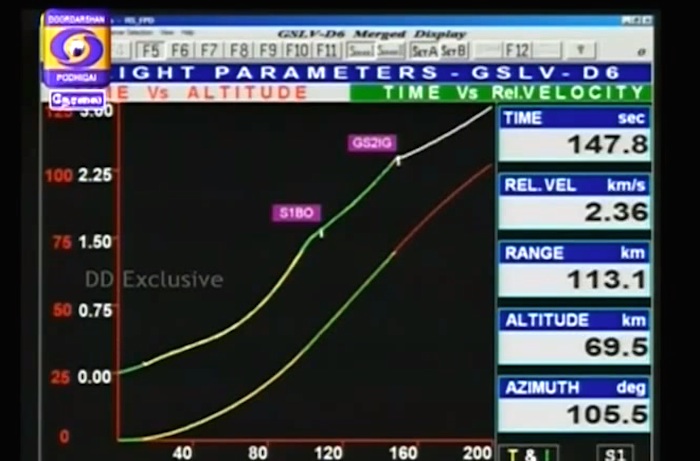
...

.

Quelle: ISRO
4372 Views
